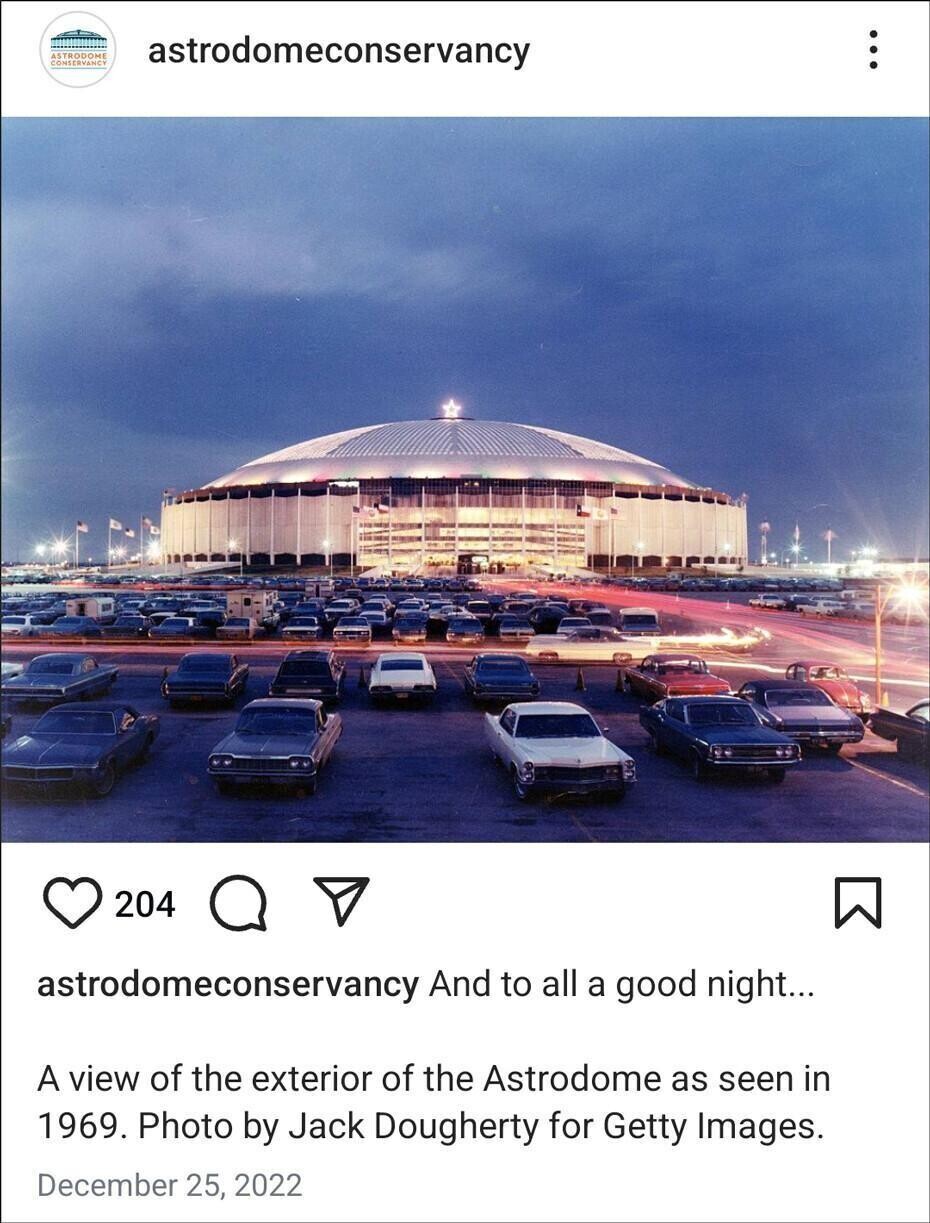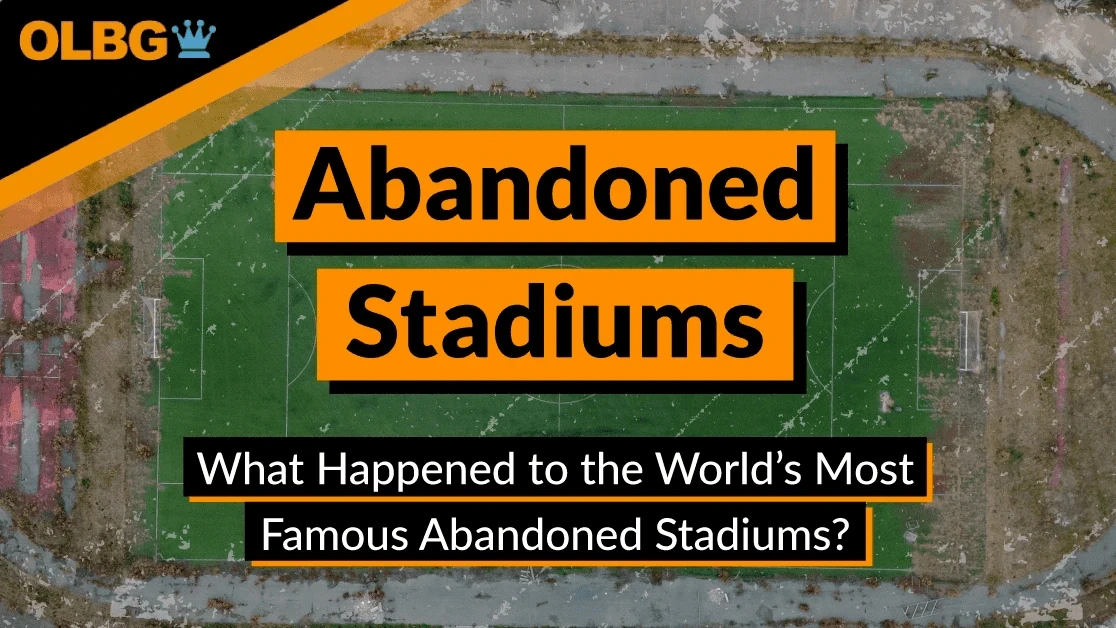
I've spent over 20 years inside the betting industry. I'll guide you to avoid the hype, ignore the noise, and steer clear of the common pitfalls that catch out everyday punters.
All over the world, once-beloved stadiums have been left behind, either demolished and redeveloped, or simply left and consumed by time. From Olympic giants to intimate local football grounds, these stadiums still hold deep emotional value to those who frequented them for so long.
But while these stadiums may not be with us anymore, the teams that played there have largely stuck around, and you can use OLBG to find the best Bookmakers and Football betting sites to bet on these clubs.
We’re going to explore:
The world’s most iconic derelict stadiums and why they were abandoned or demolished
What became of some of England’s most famous former football grounds
Which of today’s Premier League stadiums could be worth the most to developers
The oldest stadiums still in use
The world’s most renowned derelict stadiums
Some disused stadiums still have a surprising level of interest, even after being abandoned or demolished. From Olympic arenas to forgotten race tracks, here are some of the most talked-about former sporting venues, based on search volume and Instagram posts.

The most searched global stadiums
1. Astrodome, Houston, US - 501,600 searches

Once hailed as the “Eighth Wonder of the World,” the Astrodome was a revolutionary feat in stadium design - the first-ever domed multi-purpose stadium. It opened in 1965 and was home to the Houston Astros (MLB) and Houston Oilers (NFL). Beyond sports, the Astrodome has hosted concerts and a visit from the Pope, and played an essential role following Hurricane Katrina in 2005, serving as a mass shelter for thousands. After years of disuse and failed redevelopment efforts, it closed its doors. Today, the Astrodome is a haunting relic of mid-century America and has been searched over half a million times in the last year.
2. Robert F. Kennedy Memorial Stadium, Washington D.C., US - 478,500 searches
Although recently demolished, RFK Stadium still attracts interest, with 478,500 annual searches. Built in 1961, the stadium was a true all-rounder, hosting NFL, MLB, college football, and soccer teams over six decades. It was the original home of D.C. United and the Washington Commanders. Despite its decline, it remained a favourite for fans thanks to its proximity to the Capitol and unique multi-sport layout. Although it had been empty since 2017, online interest remains strong as fans mourn the loss of a venue that once brought the community together.
3. Olympic Stadium (Stade Olympique), Montreal, Canada - 336,700 searches
Built for the 1976 Summer Olympics, Montreal’s Olympic Stadium once symbolised architectural ambition, featuring a distinctive tower and retractable roof. Nicknamed “The Big O” - and later “The Big Owe” due to its massive cost - the stadium became a burden for taxpayers and was used much less. While it has hosted baseball, football, and concerts over the decades, it now sits mostly dormant, drawing attention for its striking design and complicated legacy, being searched for more than 336,000 times in the past year.
The most searched UK stadiums

1. Casement Park, Northern Ireland - 253,800 searches
Once the home of Antrim GAA, Casement Park has been closed since 2013, awaiting redevelopment. After years of legal, political, and funding delays, it was expected to be rebuilt in time for UEFA Euro 2028, but delays have meant that it unfortunately won’t be ready in time for the tournament. This back-and-forth over its potential reopening is likely why it has been searched over 250,000 times over the last year.
2. Griffin Park, England - 190,400 searches
Home to Brentford FC for over a century, Griffin Park was famous for its old-school charm and the unique fact that it had a pub on every corner. It closed in 2020 when the club moved to the Gtech Community Stadium. The site lay empty for a couple of years, but is now being redeveloped into housing, and fans still fondly remember the tight terraces and unique atmosphere. A garden will be at the centre of the new development, honouring the old stadium.
3. Walthamstow Stadium, England - 36,400 searches

Walthamstow Stadium was an East London institution, a famous greyhound racing venue from 1933 to 2008. After its closure, it was partially preserved and converted into housing, with the original neon signage and façade retained. The ground still sparks nostalgia among locals, particularly those who grew up watching the dogs race under the lights.
What became of English football’s old stadiums?
But when stadiums do close, they don’t just vanish - they get repurposed, redeveloped, or sometimes just abandoned. So, we analysed 25 of the most notable former English football stadiums to uncover their fate.

Note: Some stadiums fall into multiple categories due to mixed-use redevelopment plans.
1. Residential use (64%)
There’s a clear trend for turning old stadiums into housing, with residential developments accounting for just under two-thirds (64%) of stadium redevelopments. Former homes of clubs like Arsenal (Highbury), Manchester City (Maine Road), and Sunderland (Roker Park) have all been transformed into housing. This trend reflects the high land value of inner-city sites and the demand for housing.
2. Retail development (24%)
The second most common outcome is retail development, seen in just under a quarter (24%) of cases, including former grounds such as Bolton Wanderers’ Burnden Park and Brighton’s Goldstone Ground. These sites often become retail parks or shopping complexes, likely due to their size and central locations.
3. Community spaces (12%)
A smaller number (12%) of stadiums have been repurposed for community spaces. For example, Swansea City’s Vetch Field was converted into a landscaped area featuring community allotments, known as 'Vetch Veg'. Others, like Coventry’s Highfield Road and Brentford’s Griffin Park, became mixed-use community and residential developments.
4. Institutional use & derelict/unused (4%)
Some stadiums are repurposed for institutional purposes, such as Oxford United’s Manor Ground, which became part of a hospital. Some former stadiums, like Millmoor (Rotherham United), have been left derelict, although some junior teams still use it.
Which Premier League stadiums could be the most valuable?
As we can see, many stadiums have been transformed into residential development, and it's no wonder developers have snapped up so many of them, as stadiums often sit on prime land. So, which current stadiums might hold the highest value?
To find out, we estimated:
The footprint of each Premier League stadium (m²)
The average property price per square metre in the surrounding area
Multiplying the two gave us a rough estimate of the potential land value if these sites were sold, highlighting their redevelopment potential.
Note: These estimates are hypothetical and based on land value, not commercial or sporting worth.

London clubs dominate the list due to the capital's larger property values and the stadiums' size. The London Stadium (West Ham United) tops the list with an estimated land value of £545 million, mainly due to its vast footprint (64,778m²) combined with London's high property prices (£8,420 per m²).
These three stadiums are all in London and have median property prices of over £8,000/m², with Chelsea’s Stamford Bridge reaching £10,590/m² — the highest property price per square metre.
How do stadium land values outside of London compare?
Old Trafford (Manchester United) is the most valuable stadium outside London, with an estimated land value of £158 million, driven by its large footprint and a relatively high property price in Stretford (£3,790/m²). It’s also the third-most Instagrammable stadium, highlighting its global appeal, although its future use is in doubt as United move forward with plans for a new stadium.
Etihad Stadium (Manchester City) and St James’ Park (Newcastle United) follow in value, though land values are significantly lower due to lower property prices.
Anfield (Liverpool) and Goodison Park (Everton), despite their historic status, have much lower estimated land values (£30m and £28m respectively), mainly due to lower property prices in Liverpool (£1,130 - £1,210/m²). However, it's been proposed that Goodison Park be repurposed for a good cause once Everton complete their upcoming move to their new home.
| Rank | Stadium | Club | Location | Stadium footprint (m2) | Postcode sector | Median property price per m2 | Estimated land value |
|---|---|---|---|---|---|---|---|
| 1 | London Stadium | West Ham United | Stratford | 64,778 | E20 2 | £8,420 | £545m |
| 2 | Emirates Stadium | Arsenal | Holloway | 38,783 | N5 1 | £9,600 | £372m |
| 3 | Stamford Bridge | Chelsea | Fulham | 29,710 | SW6 1 | £10,590 | £315m |
| 4 | Tottenham Hotspur Stadium | Tottenham Hotspur | Tottenham | 43,458 | N17 0 | £4,770 | £207m |
| 5 | Craven Cottage | Fulham | Fulham | 19,029 | SW6 6 | £10,110 | £192m |
| 6 | Old Trafford | Manchester United | Trafford | 41,807 | M16 0 | £3,790 | £158m |
| 7 | Gtech Community Stadium | Brentford | Brentford | 21,924 | TW8 0 | £6,860 | £150m |
| 8 | American Express Stadium | Brighton & Hove Albion | Brighton and Hove | 31,125 | BN1 9 | £4,410 | £137m |
| 9 | Etihad Stadium | Manchester City | Manchester | 38,866 | M11 3 | £2,840 | £110m |
| 10 | St James' Park | Newcastle United | Newcastle upon Tyne | 39,777 | NE1 4 | £2,680 | £107m |
| 11 | Selhurst Park | Crystal Palace | Selhurst | 20,125 | SE25 6 | £5,080 | £102m |
| 12 | City Ground | Nottingham Forest | West Bridgford | 23,714 | NG2 5 | £3,890 | £92m |
| 13 | St Mary's Stadium | Southampton | Southampton | 28,792 | SO14 5 | £2,710 | £78m |
| 14 | Vitality Stadium | Bournemouth | Bournemouth | 16,369 | BH7 7 | £4,670 | £76m |
| 15 | King Power Stadium | Leicester City | Leicester | 28,031 | LE2 7 | £2,320 | £65m |
| 16 | Villa Park | Aston Villa | Birmingham | 31,192 | B6 6 | £1,780 | £56m |
| 17 | Portman Road | Ipswich Town | Ipswich | 21,940 | IP1 2 | £2,100 | £46m |
| 18 | Molineux Stadium | Wolverhampton Wanderers | Wolverhampton | 26,611 | WV1 4 | £1,510 | £40m |
| 19 | Anfield | Liverpool | Liverpool | 26,140 | L4 4 | £1,130 | £30m |
| 20 | Goodison Park | Everton | Liverpool | 22,906 | L4 0 | £1,210 | £28m |
The oldest UK stadiums still in use
But while the option of redeveloping a stadium can be lucrative, many have managed to stand the test of time, hosting matches for over a century.
While they have evolved over the years and undergone renovations, these stadiums still stand on their original sites and have served the same purpose for generations.
1. Sandygate, Sheffield - 1804
Sandygate Road, built in Sheffield, England, in 1804, is recognised as the oldest football ground in the world. Home to Hallam FC, one of the oldest football clubs, Sandygate has hosted matches for over two centuries, reflecting the deep roots of football in English culture.
2. Racecourse Ground, Wrexham - 1807
The Racecourse Ground is the oldest international football stadium still in use, having hosted Wales’ first home international in 1877. Originally used for horse racing - hence the name - it transitioned into a football venue for Wrexham AFC, one of the oldest professional football clubs in the world (founded in 1864).
3. Lord’s, England - 1814
The original Lord’s, often called the "Home of Cricket," was founded in London in 1787, but moved to its current site in 1814.. As the sport's spiritual headquarters, it has seen countless historic matches. It remains one of cricket’s most prestigious venues, hosting international tests, county matches, and the famous finals of major tournaments.
| Rank | Stadium | Location | Sport(s) | Opened |
|---|---|---|---|---|
| 1 | Sandygate | Sheffield | Football | 1804 |
| 2 | Racecourse Ground | Wrexham | Football | 1807 |
| 3 | Lord’s | London | Cricket | 1814 |
| 4 | The Oval | London | Cricket | 1845 |
| 5 | Bramall Lane | Sheffield | Football | 1855 |
| 6 | Old Trafford Cricket Ground | Trafford | Cricket | 1857 |
| 7 | Field Mill | Mansfield | Football | 1861 |
| 8 | Deepdale | Preston | Football | 1875 |
| 9 | Stamford Bridge | London | Football | 1877 |
| 9 | Rodney Parade | Newport | Rugby union & football | 1877 |
| 11 | Ewood Park | Blackburn | Football | 1882 |
| 12 | Anfield | Liverpool | Football | 1884 |
| 13 | Gigg Lane | Bury | Football | 1885 |
| 14 | Goodison Park | Liverpool | Football | 1892 |
The oldest global stadiums still in use
1. Croke Park, Republic of Ireland - 1884
Croke Park is the spiritual home of Gaelic games and a symbol of Irish identity. Opened in 1884 and owned by the Gaelic Athletic Association (GAA), it has hosted some of the most significant sporting and political moments in Irish history, including the tragic events of Bloody Sunday in 1920.
2. Franklin Field, United States - 1895
Located in Philadelphia, Franklin Field is the oldest stadium in the United States. It has hosted everything from college football (home of the Penn Quakers) to NFL games, including the first televised football game in 1939. The stadium was also a pioneer in design, becoming the first with a scoreboard and upper deck.
3. Panathenaic Stadium, Greece - 1896
Built entirely from marble, the Panathenaic Stadium is a relic of ancient and modern Olympic history. Though rebuilt in the 19th century, it stands on the site of an ancient stadium dating back to 330 BC. It’s still used for ceremonial events, including the Olympic flame handover.
Methodology
We created a list of sporting venues that have been abandoned or disused for a significant period, some of which have since been demolished or returned to use.
For each, we sourced the number of global searches between April 2024 and March 2025 using Google Ads Keyword Planner and the number of Instagram posts mentioning the stadium using hashtags as of April 24th, 2025.
We then created a list of 25 English football stadiums that have been closed down and recorded what happened after closure, calculating this as a percentage. Note: Some stadiums fall into multiple categories due to mixed-use redevelopment plans, so percentages don’t add to 100%.
We also estimated the land value of each Premier League stadium for the 2024-25 season. This was done by first estimating the stadium's footprint in square metres using Google Maps. Note that this refers to the stadium and not any other surrounding land.
Then, the median property price per square metre for the postcode sector of each stadium was sourced from HouseMetric, which was multiplied by the stadium’s footprint.
Finally, we looked at some of the oldest stadiums still in use. This is not an exhaustive list, but some of the most notable examples of older stadiums still used by the same team/sport.



